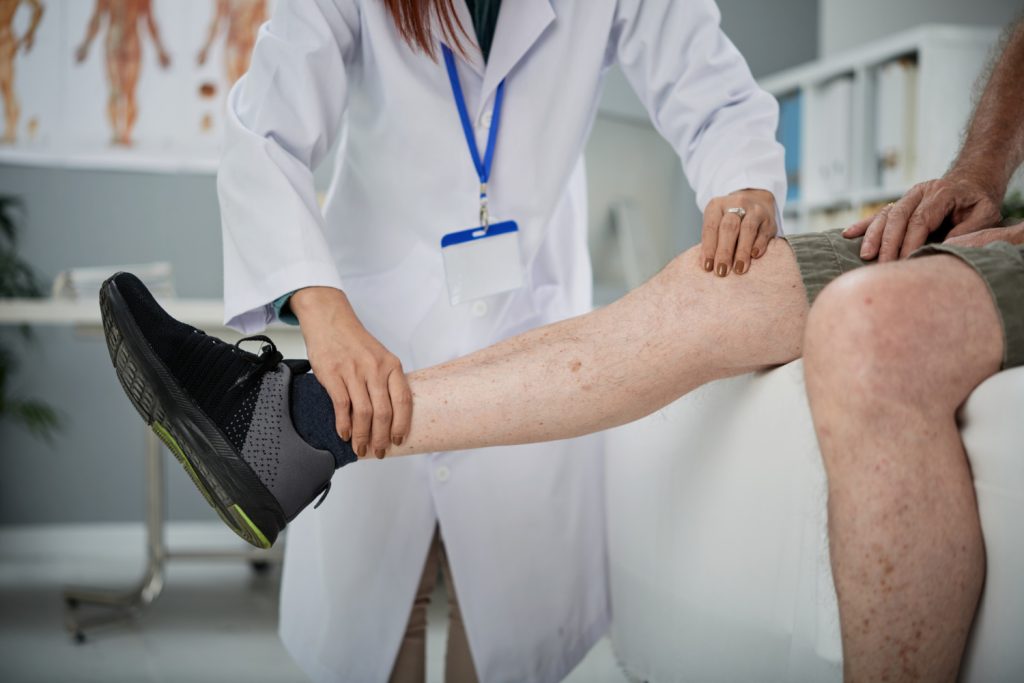The Achilles tendon is the largest and strongest tendon in the human body. It connects the calf muscle to the heel bone. Despite its strength, it remains vulnerable to injuries, especially among athletes and active individuals. An Achilles tendon injury can significantly impair mobility and quality of life. Understanding your treatment options, including surgical repair, is crucial for achieving a full recovery.
Understanding Achilles Tendon Injuries
To fully understand Achilles tendon injuries, it is essential to recognize the various types and their corresponding severities. These injuries range from mild strains to a completely ruptured Achilles tendon, where the tendon tears fully. A torn tendon usually results from sudden movements that place extreme stress on the lower leg, often during sports or intense physical activity.
Common symptoms include a popping sound, immediate pain, swelling, and difficulty walking. Accurate diagnosis through physical examination and imaging studies is crucial for determining the extent of tendon damage and selecting the appropriate treatment for Achilles tendon injuries.
Non-Surgical Treatment for Achilles Injuries
Not every Achilles tendon injury requires surgery. For partial tears or cases of Achilles tendinitis, nonsurgical treatment can be highly effective. Once the injury is diagnosed through a thorough physical examination, treatment often involves rest, immobilization, and structured rehabilitation.
A walking boot may be used to immobilize the foot and ankle, allowing the damaged tendon to heal naturally. Physical therapy exercises focus on restoring strength, flexibility, and balance. Heel wedges or custom orthotics can reduce strain on the tendon during recovery.
Although nonsurgical treatment offers good outcomes for many injuries, it may not be ideal for patients with a completely ruptured Achilles tendon or a severe Achilles tendon tear.

When Surgery Becomes Necessary
When nonsurgical methods fail to restore full function or if the injury is identified as an Achilles tendon rupture, foot and ankle surgery becomes the recommended course of action. Surgical intervention is often suggested for younger, athletic patients who require a strong repair to return to high-demand activities.
Choosing surgery depends on several factors, including the extent of tendon damage, the patient’s overall health, and their level of physical activity. A detailed consultation with an orthopedic surgeon who specializes in sports medicine ensures a personalized treatment plan for optimal recovery.
Surgical Options for Achilles Tendon Repair
Several surgical techniques are available, depending on the type and severity of the injury. Surgeons select the most appropriate method based on the patient’s specific needs and the condition of the tendon.
Open Achilles Tendon Repair
The open repair technique involves making an incision along the back of the lower leg to access and suture the torn tendon directly. This method provides excellent control over the repair and is often preferred for large or complicated ruptures. However, open surgery carries a slightly higher risk of wound complications compared to minimally invasive procedures.
Minimally Invasive Achilles Tendon Surgery
Minimally invasive surgery uses smaller incisions and specialized tools to repair the tendon. This technique lowers the risk of infection and minimizes scar tissue formation. Patients who undergo minimally invasive Achilles tendon surgery often experience quicker wound healing and less postoperative pain.
Achilles Tendon Transfer
In rare cases, when direct repair is not possible due to extensive tendon damage, a tendon transfer may be necessary. This procedure involves moving a tendon, typically from the foot and ankle area, to restore strength and function to the lower leg. Although more complex, tendon transfer offers a strong solution for chronic or neglected ruptures.
Recovery Time for Achilles Surgery
Post-surgical recovery requires a structured rehabilitation program to achieve the best results. Recovery time for Achilles surgery typically spans several months, but varies depending on the initial injury, surgical technique, and the patient’s commitment to rehabilitation.
Typically, the recovery timeline looks like this:
- Weeks 0–2: Non-weight bearing with crutches. Elevation to reduce swelling.
- Weeks 2–6: Transition to a walking boot with heel wedges. Begin gentle motion exercises.
- Weeks 6–12: Progressive weight-bearing and strengthening exercises.
- Months 3–6: Return to low-impact activities like cycling or swimming.
- Months 6–12: Gradual return to sports and high-impact activities with physician clearance.
Each patient’s journey is unique. Regular follow-up visits are crucial for monitoring healing and adjusting the rehabilitation plan as needed.
Risks and Considerations of Achilles Tendon Surgery
While Achilles tendon repair surgery offers excellent outcomes, it is essential to understand the potential risks associated with it. These may include infection, wound healing issues, nerve damage, and tendon rerupture. Careful adherence to postoperative instructions and active participation in physical therapy help minimize these risks.
Patients with diabetes, smokers, and those with circulation problems face a higher risk of wound complications. Additionally, bone spurs or scar tissue may complicate surgical repair, requiring more advanced techniques.
Having an open discussion with your surgeon about the benefits and potential complications sets realistic expectations and improves satisfaction with the final results.
Preventing Future Achilles Tendon Injuries
Prevention plays a crucial role in the recovery process after an Achilles injury. Strengthening the calf muscles through targeted physical therapy exercises enhances the durability of the tendons. Flexibility exercises for the lower leg also help lower the risk of strain.
Proper footwear, using custom orthotics when needed, and gradually increasing training intensity can help prevent reinjury. For those with a history of insertional Achilles tendinitis or previous Achilles rupture, ongoing guidance from a physical therapist is highly recommended.
In sports medicine, prevention strategies also emphasize cross-training, thorough warm-ups, and cool-downs after activities. These steps help maintain flexibility and reduce repetitive stress on the Achilles tendon.

The Road to Full Recovery
An Achilles tendon injury can feel overwhelming. However, with the right treatment plan, a full recovery is within reach. Whether managed through nonsurgical options or Achilles tendon repair surgery, regaining strength and mobility requires dedication and professional support.
Choosing the best Achilles tendon injury treatment depends on the severity of the injury, the patient’s personal goals, and their lifestyle. Early diagnosis, expert care, and strict commitment to rehabilitation are essential to achieving a successful outcome.
If you experience symptoms such as sudden heel pain, swelling, or difficulty walking, seek medical attention promptly. Timely care increases your chances of a complete and strong recovery, allowing you to return to the activities you enjoy with confidence.
Ready to Get Back on Your Feet?
At Motion Orthopedic & Podiatry Institute, we combine world-class surgical expertise with compassionate, personalized care to help you achieve a full recovery. Whether you are dealing with a recent Achilles tendon injury or exploring your options for Achilles tendon repair surgery, our team is here to guide you every step of the way.
Led by renowned specialists Dr. David Buzas and Dr. Orlando Cedeno, we offer the latest surgical and non-surgical treatments tailored to your specific needs. Trust your recovery to experts who are shaping the future of orthopedic and podiatric care.
Take the first step today.
Call us at (561) 240-8600 or Schedule your consultation online and discover how Motion Orthopedic & Podiatry Institute can help you move forward with confidence.
FAQs: Achilles Tendon Injury and Surgery
What is the difference between an Achilles tendon injury and an Achilles tendon rupture?
An Achilles tendon injury refers to any damage to the Achilles tendon, ranging from mild strains and tendinitis to partial tears. An Achilles tendon rupture is a complete or near-complete tear of the tendon, often requiring surgical repair.
How do I know if I need surgery for my Achilles tendon injury?
Surgery is often recommended for a completely ruptured Achilles tendon or if non-surgical treatments fail to restore full function. Your orthopedic surgeon will evaluate your injury through a physical examination and imaging studies to recommend the best treatment option.
What is the recovery time after Achilles tendon repair surgery?
Recovery time for Achilles tendon surgery typically spans six to twelve months, depending on the severity of the injury and patient commitment to rehabilitation. Physical therapy plays a critical role throughout the recovery process.
Can Achilles tendon injuries heal without surgery?
Yes, many partial tears and cases of Achilles tendinitis can heal with nonsurgical treatments such as rest, immobilization, physical therapy, and custom orthotics. However, severe injuries like complete ruptures usually require surgical intervention for optimal recovery.
What can I do to prevent another Achilles tendon injury?
Strengthening your calf muscles, improving flexibility, wearing proper footwear, and gradually increasing your activity level can all help prevent future Achilles tendon injuries. A personalized rehabilitation and prevention plan from a physical therapist can also reduce your risk of reinjury.